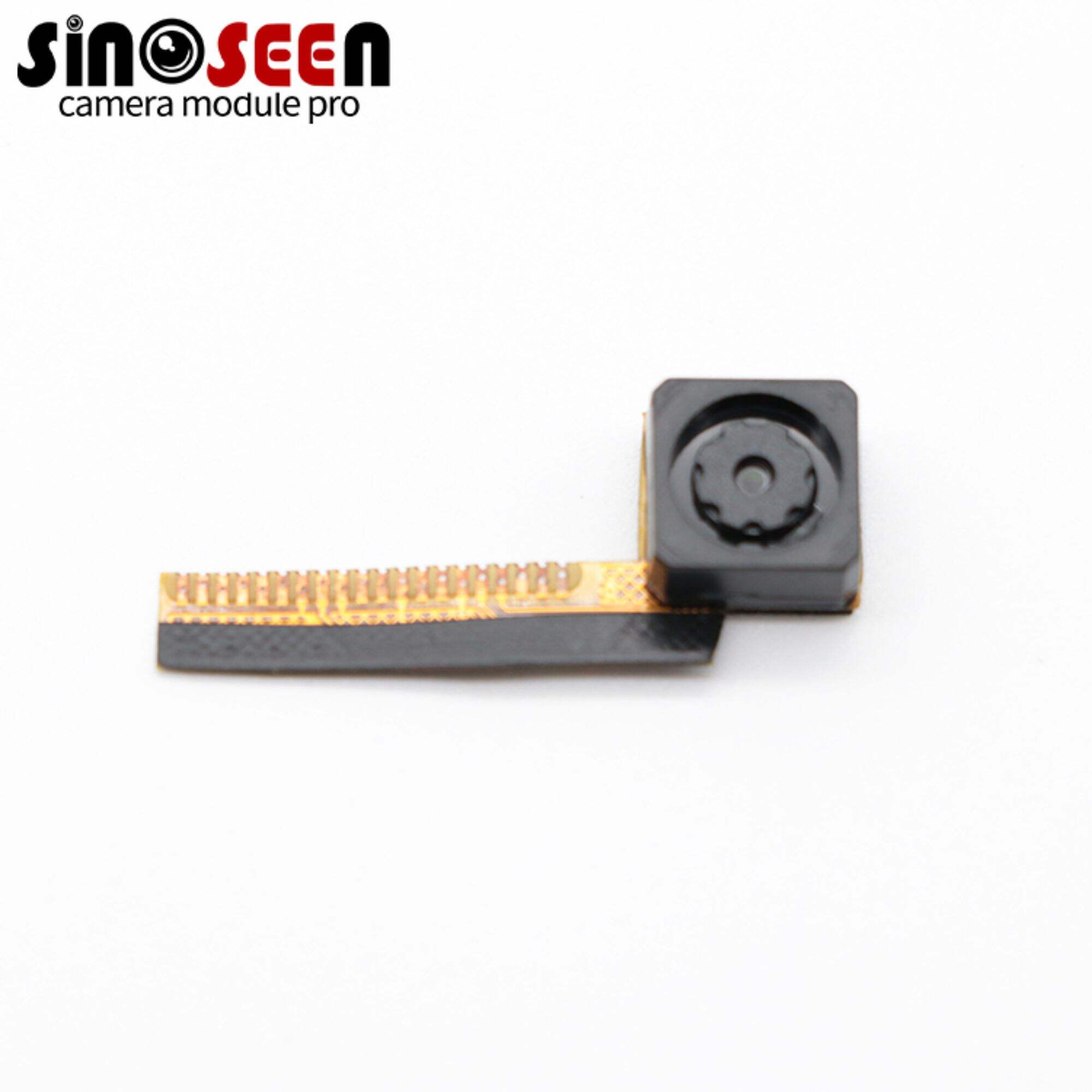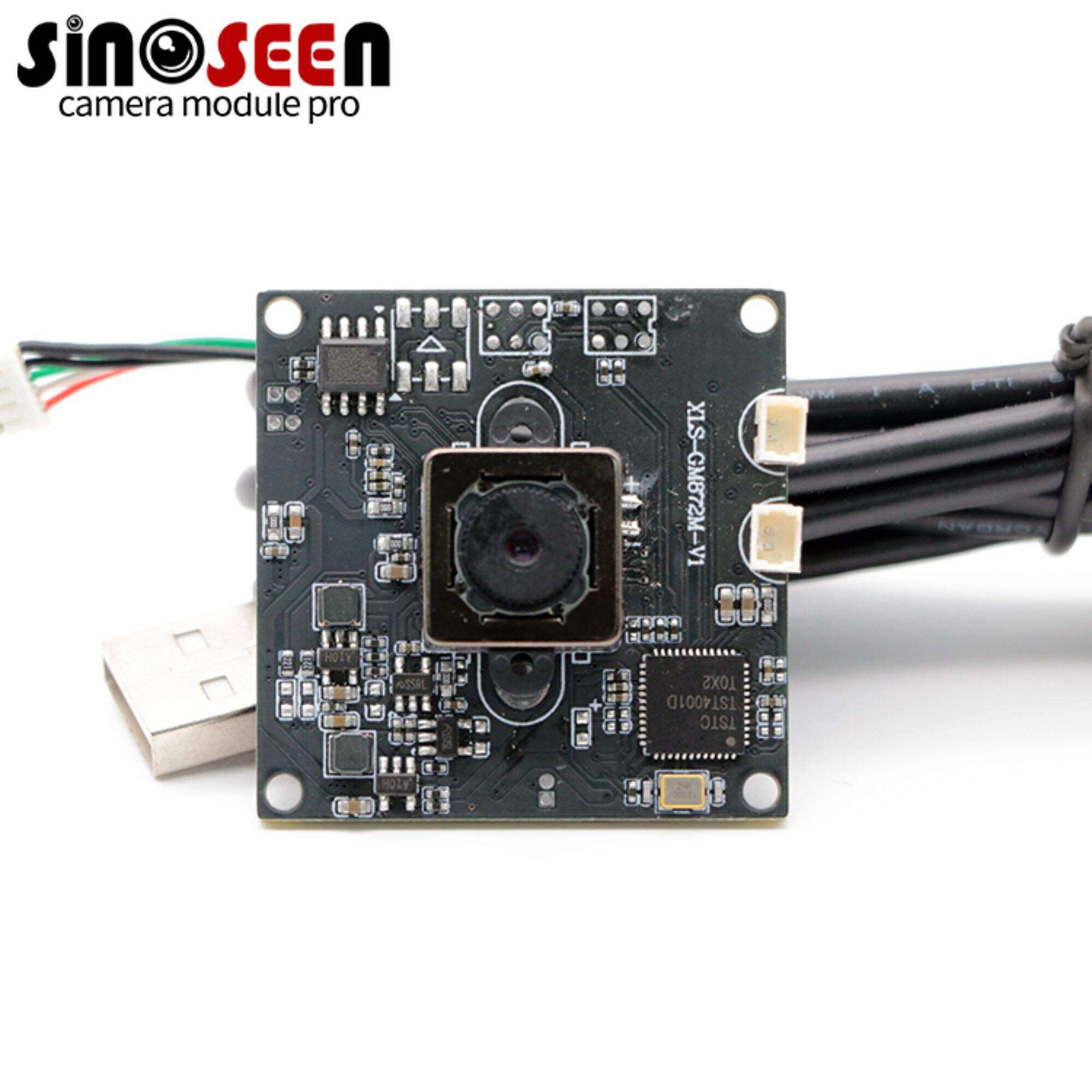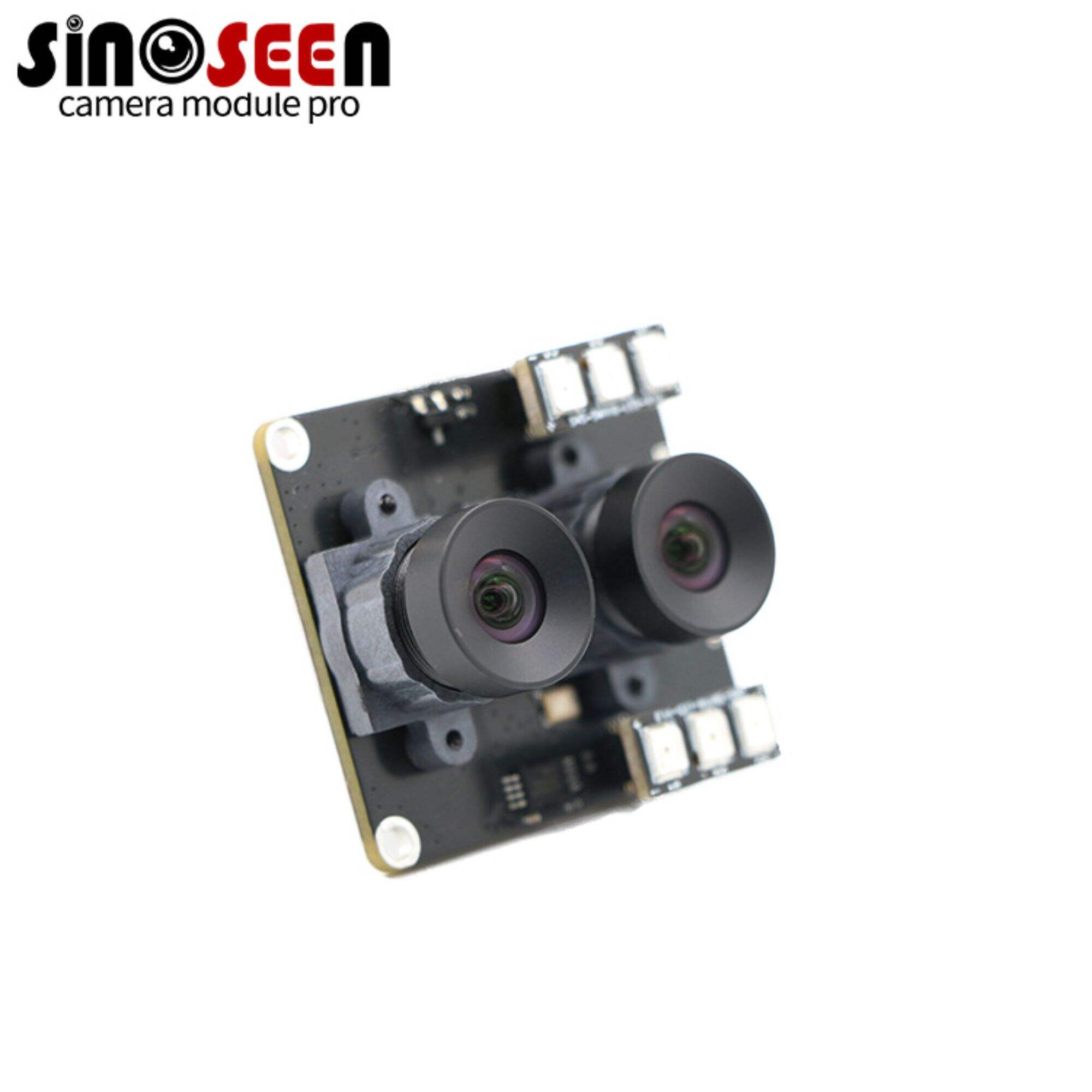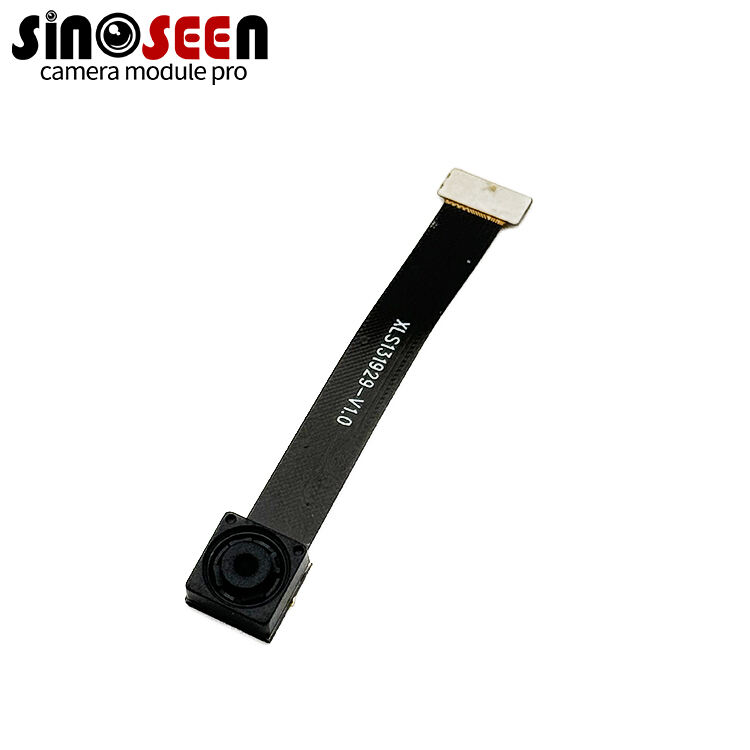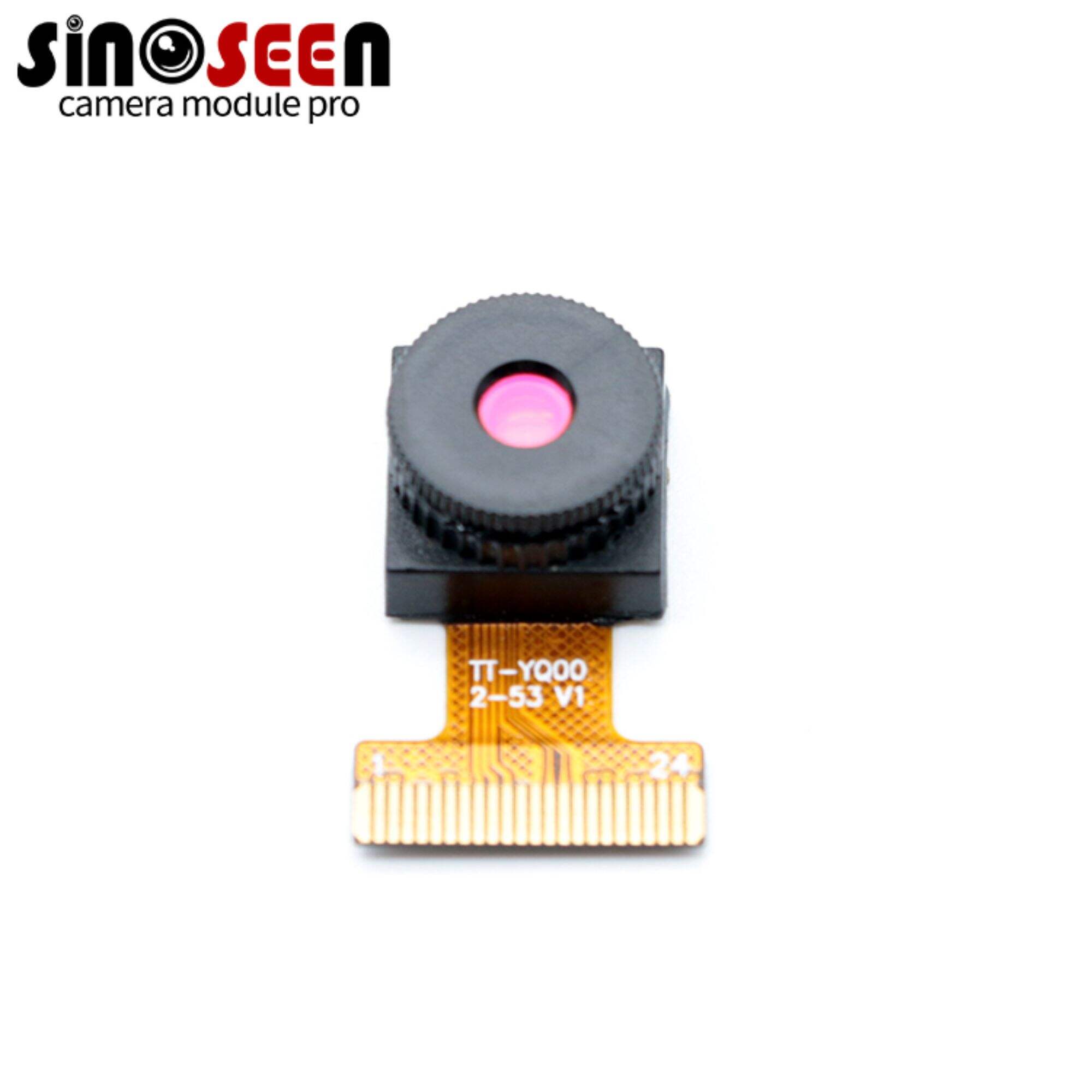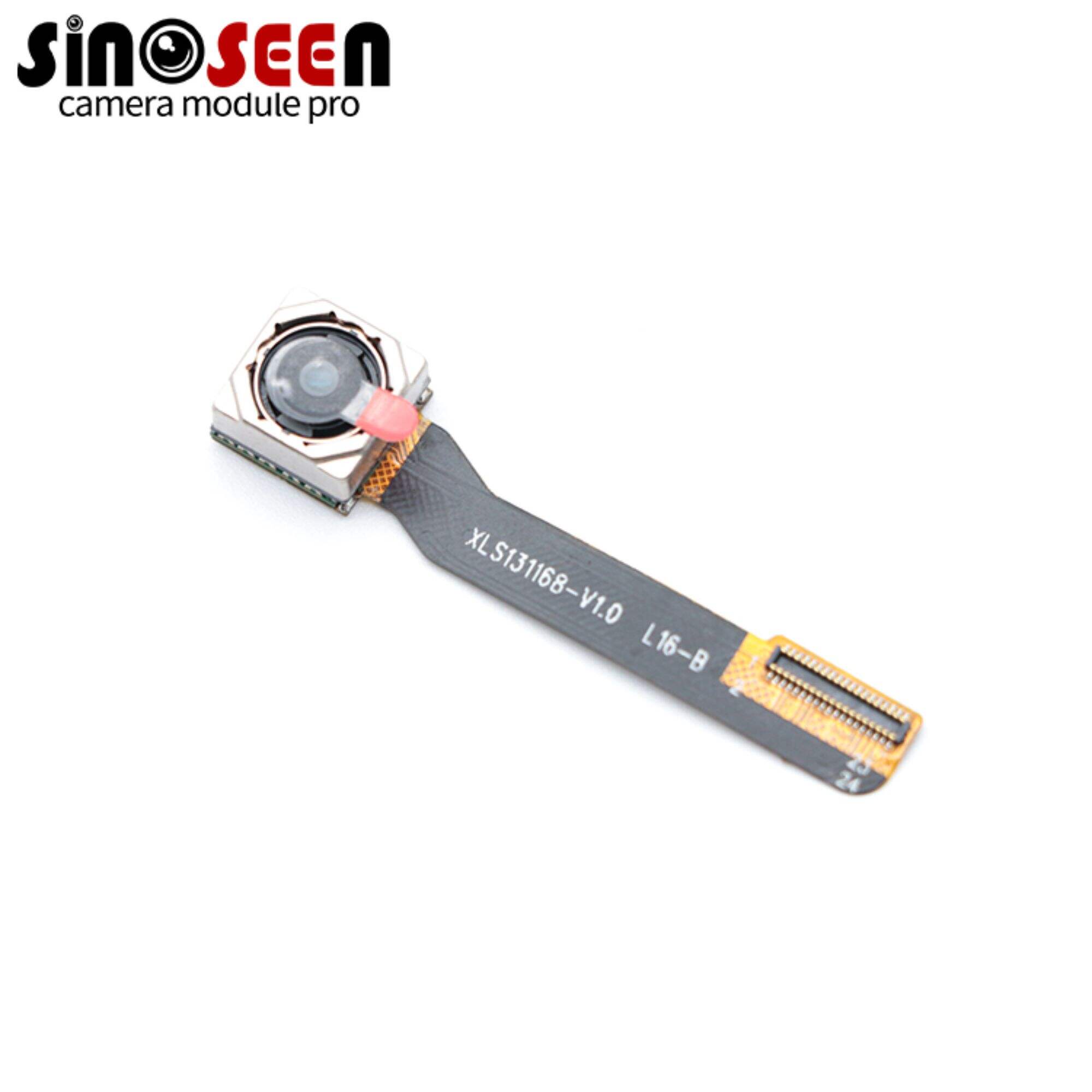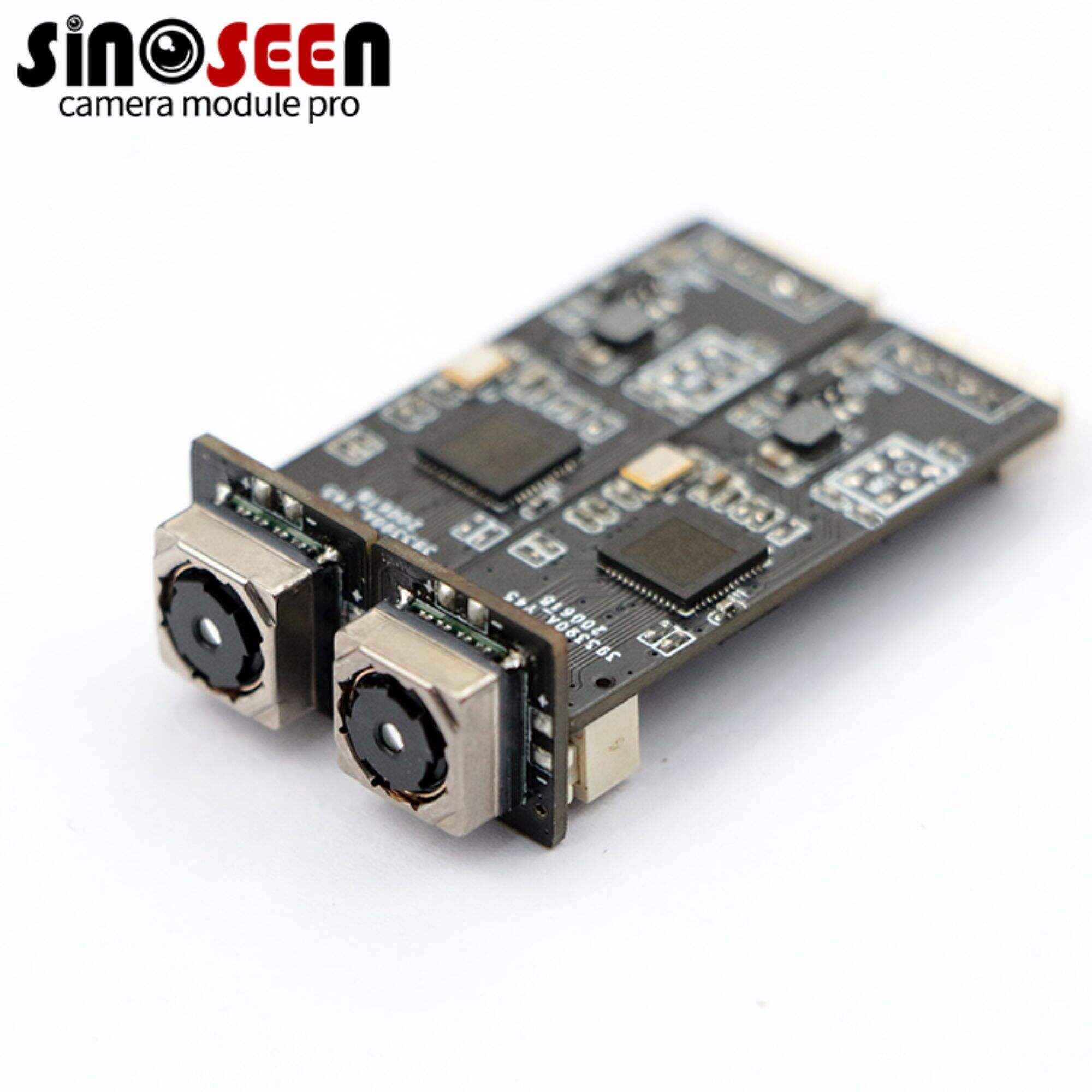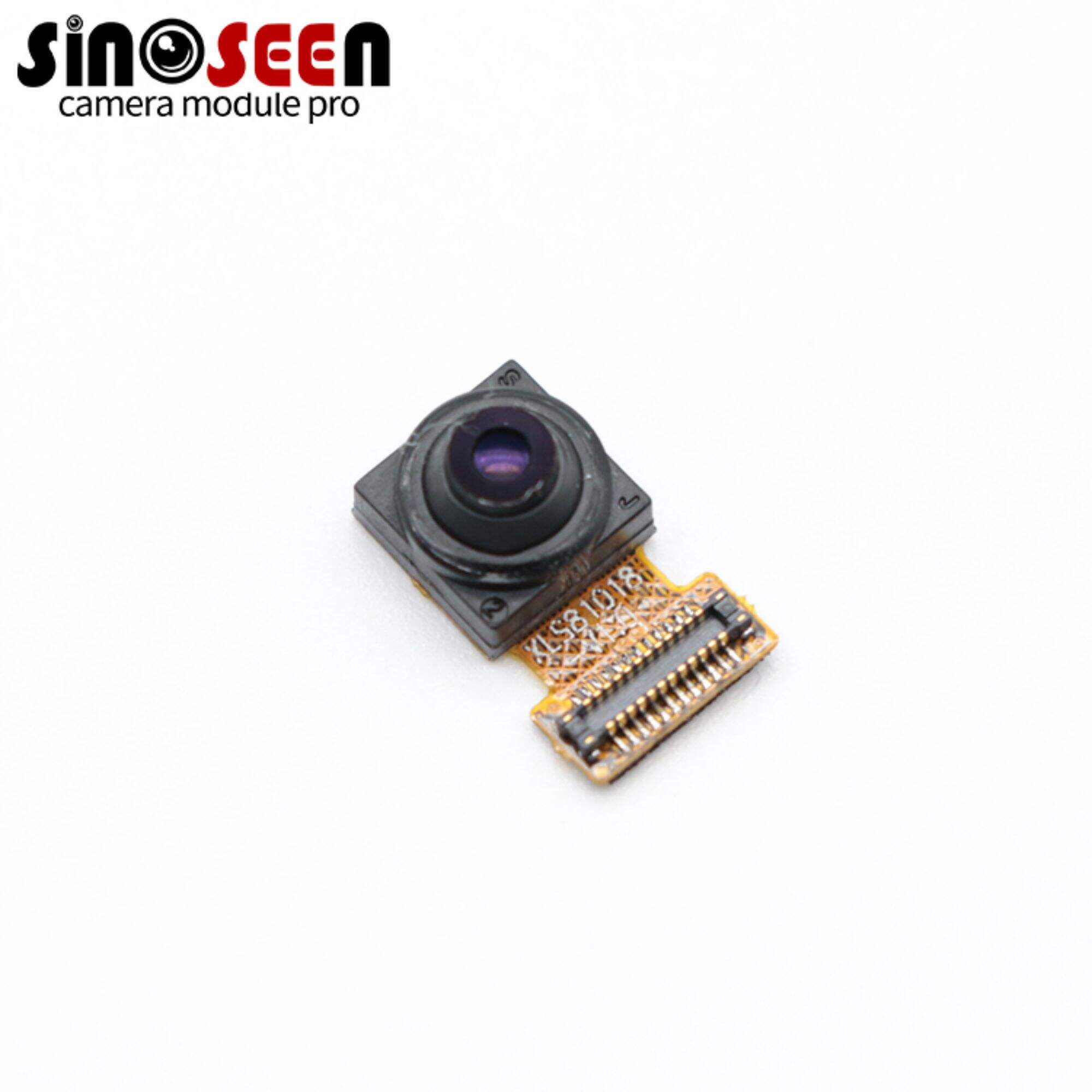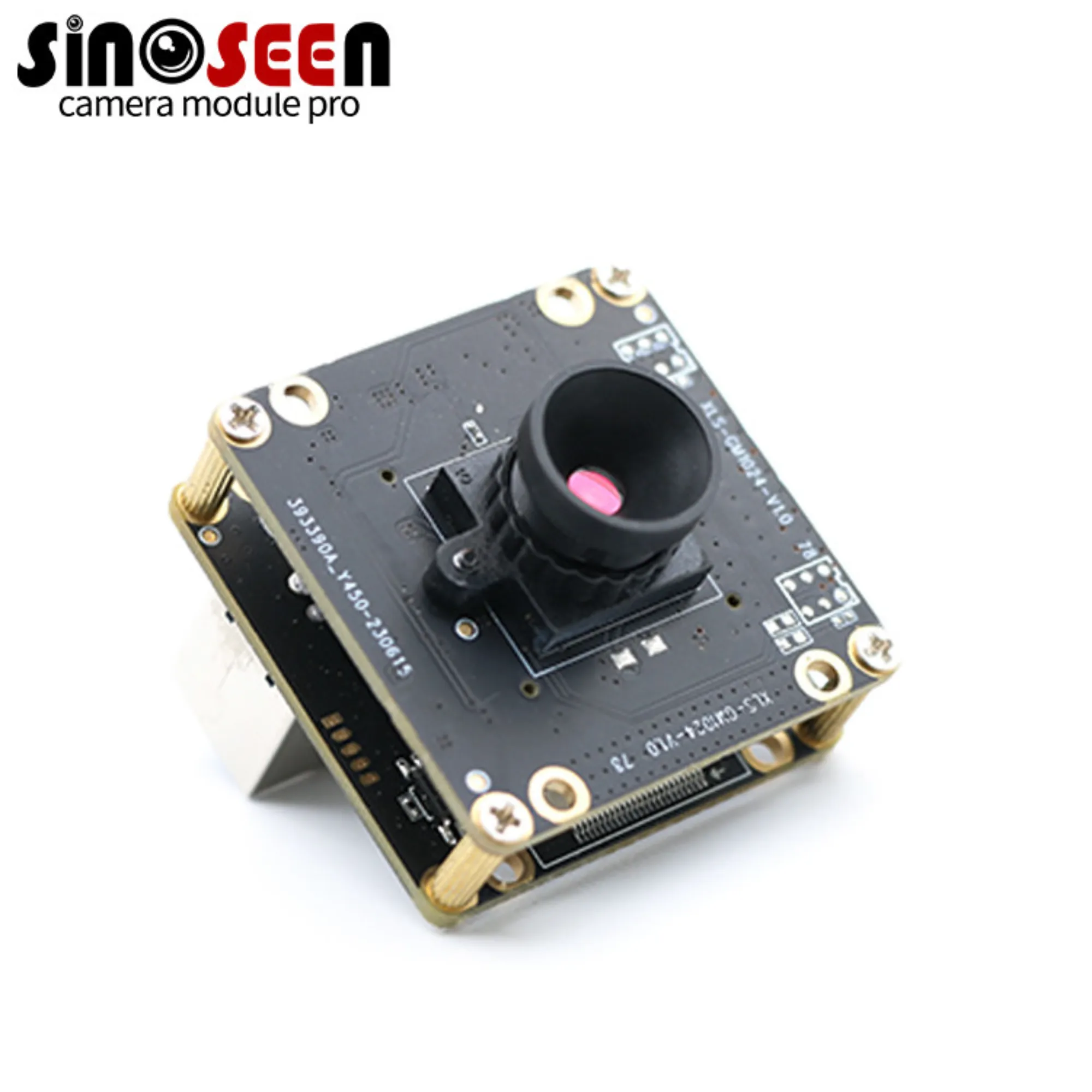אילו הם השימושים הטובים ביותר למודולי מצלמה זעירים?
אילו הם השימושים הטובים ביותר למודולי מצלמה זעירים?
מהן מודולי מצלמה מיקרוסקופיים?
- גודל קומפקטי : לרוב בטווח של 3 מ"מ עד 15 מ"מ בממדים, מה שמאפשר להכניס אותן למכשירים דקים או קטנים.
- רזולוציה גבוהה : מודולים מודרניים מציעים רזולוציות בין 2MP (מגה פיקסלים) ועד 48MP או גבוהה יותר, לתפיסת פרטים ברורים.
- צריכת חשמל נמוכה : פותחו לעבודה עם מכשירים על בסיס סוללה, להארכת זמן השימוש.
- אינטגרציה גמישה : תואמים למגוון ממשקים (כגון MIPI או USB) לצורך חיבור נוח לאלקטרוניקה.
יישומים אידיאליים למודולי מצלמות מיקרוסקופיות
1. טלפונים חכמים ומכשירים ניידים
- איך הם נוצלים : מודולי מצלמה זעירים מאפשרים את המצלמות הרבות המותקנות בסמרטפונים מודרניים, לרבות מצלמות פנים למצלמות 'סלפי', מצלמות אחוריות עיקריות, עדשות זווית רחבה, עדשות מקורו, וחיישני עומק. גודלם הקטן מאפשר לייצרנים להכניס 3–5 מצלמות בתוך גוף טלפון דק.
-
יתרונות :
- צילום רב-תכליתי : מודולים שונים מבצעים משימות ספציפיות – מודולי מקורו מצלמים תקריבים של עצמים קטנים, בעוד מודולי זווית רחבה תופסים שדה ראייה רחב יותר.
- עיצוב דק : ללא מודולי מצלמה זעירים, היה צורך במצלמות בולטות וגדלות יותר, או בפחות תכונות.
- סרטון באיכות גבוהה :: לרוב המודולים יש תמיכה בצילום ב־4K והקלטה באיטי, כדי לענות על דרישות המשתמש לייצור תוכן ברמת מקצוענים.
- דוגמאות :: מצלמות קדימה לשיחות וידאו, מצלמות אחוריות למצב פורטרט (באמצעות מודולי זיהוי עומק זעירים), ומצלמות מקורו לתיעוד פריטים קטנים כגון טקסטורות או חרקים.

2. טכנולוגיית לבושה
- איך הם נוצלים בשעוני חכם, מצלמות זעירות מאפשרות תכונות כמו שיחות וידאו, סריקת ברקוד (לתשלום), או מעקב אחר בריאות (למשל, ניתוח עור). במשקפות חכמות, הן תומכות במציאות רבודה (AR) על ידי תפיסת תמונות מהעולם האמיתי כדי להטיל תוכן דיגיטלי.
-
יתרונות :
- עיצוב בלתי מפריע המודולים נכנסים למסגרות הקטנות של התקנים נושאים מבלי לגרום להם להיות בולטים או לא נוחים.
- פונקציונליות בתנועה : משתמשים יכולים לצלם תמונות, לסרוק קודים, או לצלצל בשיחת וידאו ישירות מפרק כף היד או משקפיים, מה שמגדיל את הנוחות.
- צריכת חשמל מינימלית צריכת חשמל יעילה מבטיחה שהסוללות של התקנים נושאים יחזיקו לאורך היום.
- דוגמאות שעוני חכם עם מצלמות מובנות לצלמים מהירים, משקפות מציאות רבודה המשתמשות במודולים זעירים כדי לעקוב אחר תנועות היד או לזהות עצמים.
3. אבטחה ותצפית
- איך הם נוצלים הם משולבים במצלמות אבטחה קטנות, צלצולי דלתות או במכשירים מוסתרים לצורך פיקוח על בתים, משרדים או מרחבים ציבוריים. הגודל הקטן שלהם מאפשר להציב אותם במיקומים בולטים פחות, כגון במכשורים לדetection עשן, שעוני קיר או חורים בדלתות.
-
יתרונות :
- פיקוח סמוי מודולים מוסתרים מ prevención זיהוי, מה שעושה אותם שימושיים ללכידת גניבה או גישה לא מורשית.
- התקנה קלה בזכות הגודל הקטן שלהם קל להציב אותם במקומות צרים, כמו פינות או מסדרונות דקים.
- שיטור 24/7 רבות מהوحدות כוללות יכולות של אור נמוך או אינפרא-אדום (IR), מבטיחות הקלטות ברורות גם ביום וגם בלילה.
- דוגמאות מצלמות צלצול דלת עם מודולים זעירים לזיהוי פנים, מצלמות זעירות בחנויות קמעונאות למניעת גניבת סחורה, או מצלמות אבטחה מוסתרות בבית בתוך מדפי ספרים.
4. מערכות רכב
- איך הם נוצלים : הם מספקים כוח למצלמות אחוריות (כדי לעזור בעריכת חנייה), מערכות תצפית מסביב לרכב ב-360 מעלות (לצורך פיקוח על נקודות עיוורות), ומערכות מתקדמות לעזרת נהג (ADAS) כמו אזהרות על עזיבת נתיב או עצירת חירום אוטומטית.
-
יתרונות :
- יעילות בשטח : המודולים מתאימים לתושבות, מראות צד או זכוכית קדמית של המכונית מבלי להפריע לעיצובו.
- דימוי בזמן אמת : עיבוד מהיר מאפשר משוב מיידי, מה שקריטי לתכונות ביטחון כמו previa of collision.
- עמידות : מודולים עבור כלי רכב נושאים תנודות, שינויי טמפרטורה, ולחות, ומבטיחים אמינות.
- דוגמאות : מצלמות אחוריות במכוניות קטנות, מצלמות מראות צדדיות לטווח ראייה רחב יותר, ומצלמות לוח מחוגים (מצלמות נסיעות) להקלטת נסיעות או תאונות.
5. תחנות רפואיות
- איך הם נוצלים הם משולבים בציוד רפואי כמו אנדוסקופים, אוטוסקופים (כלי לבדיקת אוזניים) וкамירות לשיניים. לדוגמה, אנדוסקופים עם מודולים מיקרוסקופיים מאפשרים לרופאים להביט פנימה לגוף (למשל, במערכת העיכול) דרך חתכים קטנים, ומקלים על הכאב החולה.
-
יתרונות :
- שאינו פולשני מודולים קטנים מקטינים את הצורך בפתיחת גידול כירורגית גדולה, מה שמקצר את זמני השיקום.
- תמונה ברורה תמונה ברזולוציה גבוהה עוזרת לרופאים לזהות בעיות כמו גידולים או דלקת באופן מדויק.
- סטריליות מותאמים לדייטים רפואיים.
- דוגמאות גסטרוסקופים (לבדיקה של הקיבה), ארטורוסקופים (לניתוחי מפרקים) וкамירות אינטראורליות לשיניים לבדיקה של השיניים והלסת.
6. בדיקה תעשייתית
- איך הם נוצלים : הם מותקנים על רובוטים, רחפנים או כלים ניידים כדי לבדוק ציוד ייצור, פסי מעגלים או איכות מוצר. לדוגמה, בייצור אלקטרוניקה, הם בודקים פגמים ברכיבים קטנים כמו מיקרו-שיפטים
-
יתרונות :
- גישה למרחבים צרים : המודולים מתאימים לצינורות צרים, פערים במכונות או קלפות קטנות של מוצרים כדי לגלות פגמים
- שליטה באיכות עקבי : בדיקה אוטומטית עם מודולי מיקרו מקטינה טעויות אנושיות, ומבטיחה שהמוצרים עומדים בסטנדרטים
- חיסכון בעלויות : זיהוי מוקדם של פגמים מונע תיקונים יקרים או זיהוי מחדש של מוצרים
- דוגמאות : מצלמות ברובוטי מפעל שבודקים פסי מעגלים של טלפונים חכמים, מודולים בצינורות כדי לבדוק קורוזיה, או סורקים ניידים לבדיקות איכות של חלקים מתכתיים קטנים
7. רובוטיקה ורחפנים
- איך הם נוצלים : בוטי מינון (כמו בוטי משלוחים או בוטי ניקוי ביתיים), מודולים עוזרים להימנע ממפגעים ולנווט במרחבים. בדרונים, הם תופסים תמונות או וידאו מהאוויר או תומכים בטיסה יציבה על ידי מעקב אחרי הקרקע.
-
יתרונות :
- עיצוב קל משקל : מודולים מוסיפים משקל מזערי, מה שקריטי לדרונים ולבוטי מינון כדי לשמור על חיי סוללה ועל תפקוד זריז.
- משוב בזמן אמת : עיבוד מהיר של תמונות מאפשר לבוטים להגיב במהירות לשינויים בסביבתם.
- ראייה רב-תכליתית : מודולים עם עדשות זווית רחבה או תחושת 3D עוזרים לבוטים "לראות" את הסביבה שלהם בפירוט.
- דוגמאות : בוטי משלוחים קטנים המשתמשים במצלמות מיקרו כדי לנווט במדרכות, דרונים קטנים עם מודולים לתיעוד במרחבים צפופים (כמו אתרי בנייה), או בוטי ניקוי ביתיים שמייצרים מפות של חדרים לצורך ניקוי.
8. אלקטרוניקה לצרכן
- איך הם נוצלים : הם משולבים במחשבים ניידים, טאבלטים ומכשירי בית חכמים. מחשבים ניידים משתמשים בהם לשיחות וידאו, בעוד שמקפיאים חכמים עשויים לכלול מודולים לסריקת תאריכי יגולה של מזון.
-
יתרונות :
- הוספת פונקציונליות : מצלמות הופכות מכשירים רגילים לכלי לתקשורת, סריקה או פיקוח.
- פרופילים דקים : המודולים נכנסים לשוליים דקים של מסכים ניידים או ללוחות של מכשירים חכמים מבלי להגדיל את הגודל.
- ידידותי למשתמש : שילוב פשוט הופך את המכשירים לנוחים לשימוש, למשל שיחות וידאו בלחיצת כפתור בטאבלטים.
- דוגמאות : מצלמות וيب לישיבות וירטואליות, רמקולים חכמים עם מצלמות לשיחות וידאו, או מצלמות טאבלטים לסריקת מסמכים.
גורמים לשקילה בבחירת מודולי מצלמה זעירים
- רזולוציה : רזולוציה גבוהה יותר (למשל, 12MP+) עדיפה לדימות מדויק (רפואי, בדיקה תעשייתית), בעוד שרזולוציה נמוכה יותר (2–8MP) עשוייה להספיק למשימות בסיסיות (שיחות וידאו).
- גודל וגורם צורה : ודא שהמודול תואם את עיצוב המכשיר – מודולים קטנים (3–5 מ"מ) מתאימים למד worn, בעוד מודולים גדולים במקצת (10–15 מ"מ) עשויים להתאים לסמרטפונים.
- ביצוע טוב בהארות נמוכות : לשימוש באבטחה או בתעשיית הרכב, בחר מודולים עם חיישנים לאור נמוך או יכולות קרינה תת-אדומה כדי ללכוד תמונות ברורות בחושך.
- צריכת חשמל : מכשירים המופעלים על ידי סוללות (מד worn, רחפנים) זקוקים למודולים בעלי צריכת חשמל נמוכה כדי להאריך את משך השימוש.
- עמידות : מודולים תעשייתיים, אוטומotive או רפואיים חייבים לעמוד בתנאים קשים (לחות, רעידות, טמפרטורות גבוהות).
- תאימות ממשק : ודא שהמודול תואם את האלקטרוניקה של המכשיר (למשל, MIPI לסמרטפונים, USB למחשבים ניידים).
שאלות נפוצות
כמה קטנים מודולי מצלמה מיקרוסקופיים?
האם מודולי מצלמה מיקרוסקופיים יכולים ללכוד תמונות באיכות גבוהה?
האם מודולי המצלמה הזעירים עמידים מספיק לשימוש בחוץ?
מהן דרישות הכוח של מודולי מצלמה זעירים?
איך משלבים מודולי מצלמה זעירים במכשירים?
מוצרים מומלצים
חדשות חמות
-
סין מובילה יצרנים מודול מצלמה מכשיר כוח צילוםSinoseen
2024-03-27
-
המדריך האולטימטיבי להתאמה אישית עבור מודולים מצלמת OEM
2024-03-27
-
הבנה מעמיקה של מודולי מצלמה
2024-03-27
-
איך להפחית את רזולוציית מודול המצלמה?
2024-12-18

 EN
EN
 AR
AR
 DA
DA
 NL
NL
 FI
FI
 FR
FR
 DE
DE
 EL
EL
 HI
HI
 IT
IT
 JA
JA
 KO
KO
 NO
NO
 PL
PL
 PT
PT
 RO
RO
 RU
RU
 ES
ES
 SV
SV
 TL
TL
 IW
IW
 ID
ID
 SR
SR
 VI
VI
 HU
HU
 TH
TH
 TR
TR
 FA
FA
 MS
MS
 IS
IS
 AZ
AZ
 UR
UR
 BN
BN
 HA
HA
 LO
LO
 MR
MR
 MN
MN
 PA
PA
 MY
MY
 SD
SD

